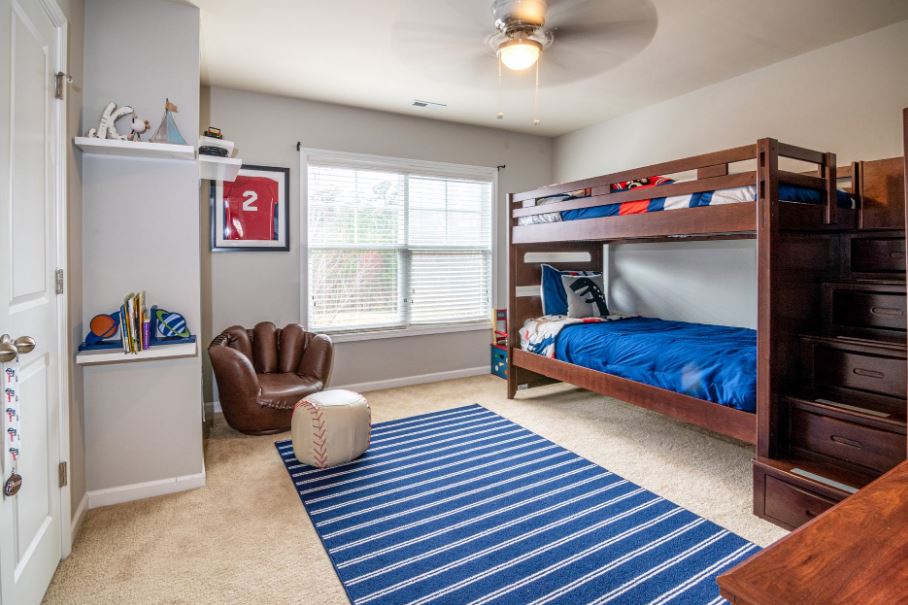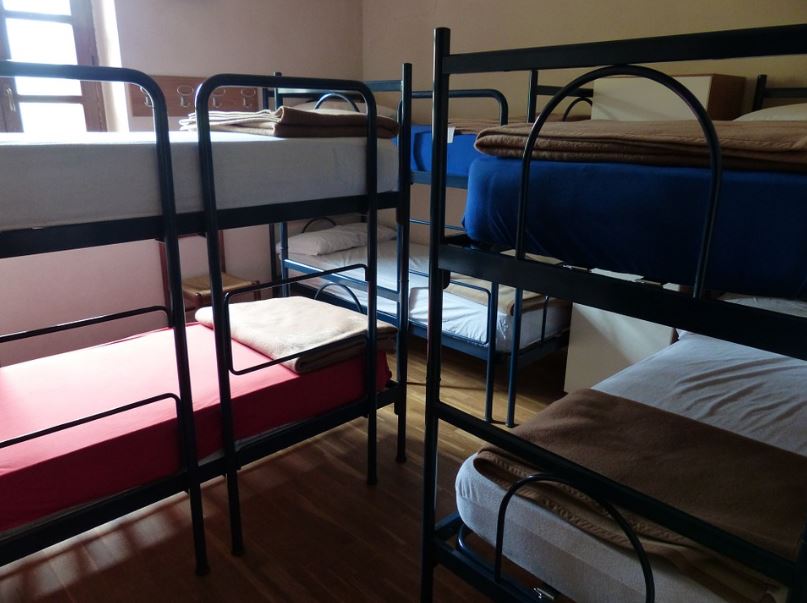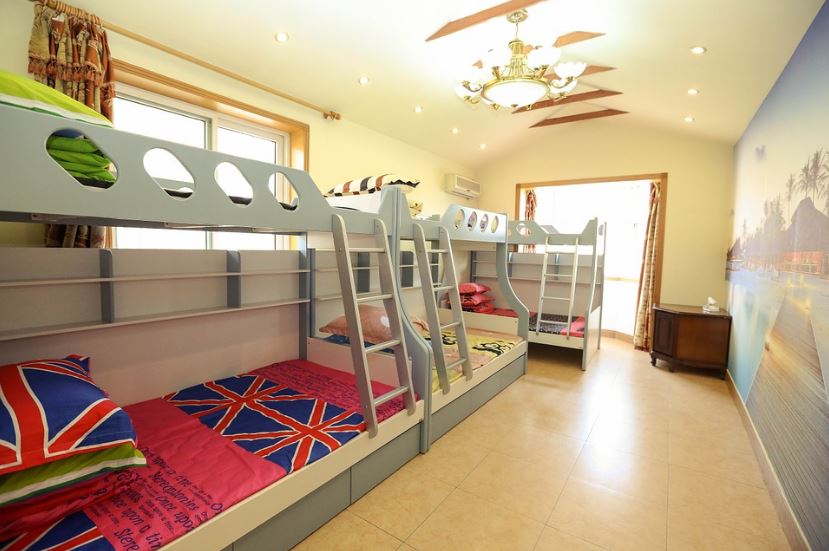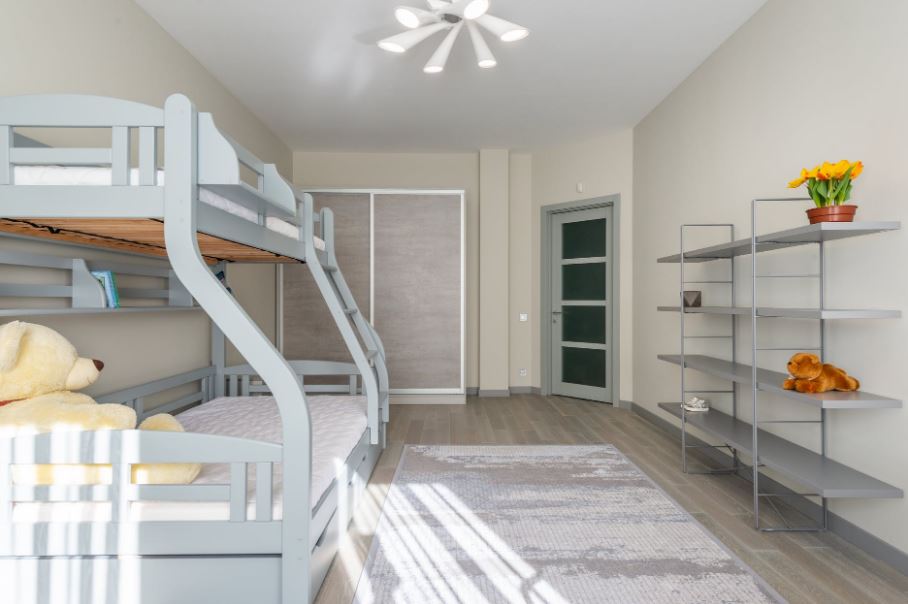Bunk beds have been long-cherished for their space-saving feature, allowing anyone to get two beds in one single space. Yet, this piece of furniture has evolved through the years, transcending its original use. Today, bunk beds come in different types based on material, design, and style, which gives a whole lot of ways of utilizing them. Whether it’s for resting, studying, working at home, hanging out with friends, or gaming, there’s a bunk bed that will fit that purpose. If you aren’t familiar with them yet, read the below and check out the various types of bunk beds – don’t be surprised if you get enticed to buy one for your home.
Material
Bunk beds are made from either wood or metal, no matter what the design or style. Though custom models are available that may include accents made of glass or synthetic materials, bunk beds will almost always still be generally in wood or metal construction.
Wooden Bunk Beds
Wood is the most widely used material for home furniture. No surprise that bunk beds are also crafted in wood compared to metal, by a considerable gap. Wooden bunk beds offer various advantages, such as sturdiness, versatility in shape, color, style, and size, and coziness and warmth other materials may not provide.
Some drawbacks are the need for proper maintenance to keep them looking great and their vulnerability to surface damage. So, don’t be surprised to see your kid’s adorable carvings on the frame or some dents from pointy objects. Nevertheless, these wooden bunk beds are durable and can last a lifetime.
Metal Bunk Beds
When bunk beds aren’t made of wood, they are made of metal using aluminum or steel alloys. The main edge of metal bunk beds is that they’re surprisingly lighter in build than their wooden counterparts, making them perfect for families that move often. They also offer an open and airy structure but can be cold to touch, making it pretty uncomfortable for a resting or sleeping area. Moreover, metal is also prone to rust, especially in humid regions. However, if you’re looking for a material that’s more amiable for modular additions and constructions, opting for metal bunk beds is your best.
Design
After the material, bunk beds can be classified by their design. Often, getting the best design is the most critical aspect of choosing a bunk bed. It dictates how the furniture will fit into your home and room, as well as its intended purpose. Unlike before, where two-tiered standard bunk beds are primarily seen in homes, various designs are now available, making bunk beds even more functional.
Standard
As its name suggests, standard bunk beds feature the basic form, one that comes into anyone’s mind when thinking about bunk beds. It incorporates two beds, one on top of the other, with a ladder on the side that allows you to reach the top bed. Other standard models may be disassembled and converted into two twin beds. Such a feature is an excellent addition as it enables you to move the beds around and alter the room’s layout, depending on your needs.
Built-In Bunk Beds
Built-in bunk beds are immovable models, as they are built alongside a wall. You will often see them in vacation houses, dormitories, or hostels. They are perfect for the given locations, as they maximize the available space sans the metals or wooden frames while still providing ample privacy. These bunk beds are also surrounded by built-in closets, cabinets, and sliding drawers and are most custom-built. While they become relatively costly, they are worth adding to your home, especially if you’re looking for customization opportunities.
Futon
Futon bunk beds replace the lower level bunk with a foldable futon for extra versatility. It functions as a comfortable sofa during waking hours, ideal if you want to hang out, play games, or watch television. At night, you can simply convert the futon into a full bed through a quick pull. Just make sure that you get high-quality ones, as cheaper types often get stuck in their odd position. Get a reliable futon bed instead, and expect to experience better comfortability and flexibility inside your bedroom.
Trundle
A trundle is basically a standard bunk bed, but add a third rolling mattress underneath the lower bed. As it comes with wheels or casters, you can simply tuck it away when not in use and pull the extra bed out when needed. Thus, allowing it to sleep three people. If you have impromptu guests, having a trundle is an easy solution to accommodate them.
Just be mindful that it won’t be ideal for long-term use. Anyone sleeping on the trundle is always at risk of being stepped on by those sleeping on the bunk beds. Another thing to look at is that the beddings and linens must fit inside the drawer snugly. If not, you need to place and remove them back and forth as you use the trundle, which can be quite a hassle.
L-shaped
L-shaped bunk beds feature two beds that are at a 90-degree angle from each other. The resulting structure takes up more floor space than standard bunk beds, but often the beds are of different sizes, giving more sleeping area. Before, L-shaped bunk beds were almost always custom-built, but there are ready-to-assemble alternatives available today. In general, this type fits kids who aren’t close in age but share the same bedroom or those who are simply not fond of tight spaces.
Loft
Loft beds use the same framework as standard bunk beds, but it empties the space below rather than having a lower bunk. Thus, creating an open area for a workstation, study nook, or play space. Technically, they are not considered bunk beds as they only have one bed and allow only one person to sleep. However, they look pretty like bunk beds, especially from afar.
Loft beds are excellent for those living in tiny homes or small apartments, as it leaves no space to waste. Some will feature shelves or cupboards to maximize the area fully. All in all, it’s a smart way of bringing a bed and office, study, or play area together.
Triple
Just like what its name indicates, triple bunk beds consist of three tiers of beds, often stacked vertically but may come in other configurations, such as an L-shaped or T-shaped design to create extra floor space and use like how it functions on a loft bed. This works if you have high ceilings or ample headroom in your bedroom. Otherwise, expect the individual sleeping on the third tier to be at risk of head concussions.
Style
Lastly, bunk beds vary depending on the decorative style. It covers the overall theme, derived from the material, texture, and decorations used for the bunk bed. Here are the most common styles available today.
Traditional
Traditional bunk beds feature the standard setup using wood construction. They boast a classic look, simply functional, but neatly appealing as they do not have an extra fuss. They are also of decent sizes, good shape, and sometimes come in solid color, tidy paints that would nicely fit lots of wooden, traditional homes.
Rustic
Rustic bunk beds are those models made to appear they came from a remote wood cabin. They are often made of unpolished and unpainted wood, creating a countryside or pastoral appeal, matching cottage-style homes, dormitories, or rooms. Sometimes, the wood is intentionally left in its log form to fully get that raw, handcrafted feel.
Farmhouse
Like the rustic style, farmhouse bunk beds use wood but rather resemble the look of items you see on a ranch. For instance, the bunk beds borders may copy the jumping obstacles used for horses or depict a ranch gate. Meanwhile, its ladder may use white fences, while storage may bear the appearance of antique trunks. Another thing that separates farmhouse bunk beds from rustic ones is that they lean towards smoother, polished, and light-colored woods, while the latter embraces bare.
Vintage
Suppose your home is under a Victorian, Gregorian, or European-style Retro theme. In that case, it won’t be fitting to hide a standard and traditional bunk bed inside the bedroom that would quickly drown from the grandeur of these vintage styles. Fortunately, bunk beds can easily be adapted to resemble these themes. Often, wood is painted with the appropriate color and carved with accents to achieve the desired look. While this style is kid-friendly, they are perfect for aesthetically-loving adults.
Modern
Modern bunk beds adopt the design that rose during the mid-20th century. They blend aesthetics and functional values to attain a unified structure. These bunk beds often use wood and earthier elements, with colors ranging from brown, olive greens, rust, turquoise, and rust. Adding the efficient, tidy shapes, the overall look is purposeful and captivating.
Contemporary
Contemporary bunk beds value “now” and “future.” They always opt for shapes, textures, and themes that are fresh or up-to-date but also anticipate upcoming trends. This style also uses state-of-the-art materials, such as glass and metals, to evoke an industrial and futuristic ambiance. Clean and minimalist lines are also present, with colors often staying strict to a palate of white, black, and gray.
Novelty
Bunk beds are not exempted from novelty, especially for kids’ rooms that call for it. Novelty bunk beds are generally those that are custom-made to fit a whimsical theme. These beds are meticulously crafted to resemble a treehouse, playhouse, castle, cars, buses, or anything you might think of that can please your children. Some even incorporate slides, windows, and other elements that would make kids go buzzing.
Final Words
Indeed, bunk beds have transformed a lot in recent times, which is why it’s more crucial to pick the right type for your home. Just like how you decide on your other purchases, like when getting a new pair of shoes, buying a new laptop, or finding a good accompanying mattress, take all things into consideration and see if it would fit your needs and preferences. That way, you’ll always get the most of what you pay for.





